Virendra Kumar Goswami, Indian Institute of Technology, India
During UN-Decade of Ocean Science for Sustainable Development, begin in 2021, it is increasingly important to gather as a scientific community to raise awareness of the truly global dimension of the ocean, address environmental challenges, and set forth on a path towards a resi [....] » Read More



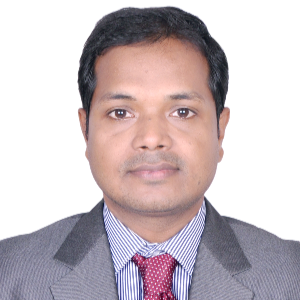





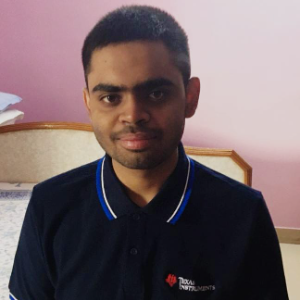
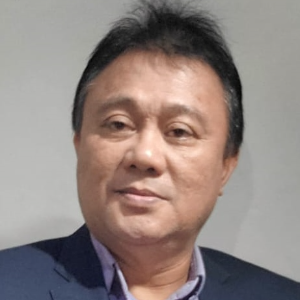



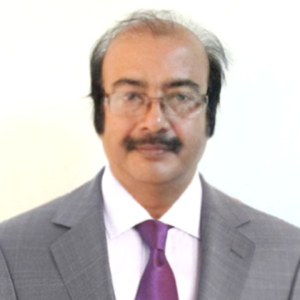


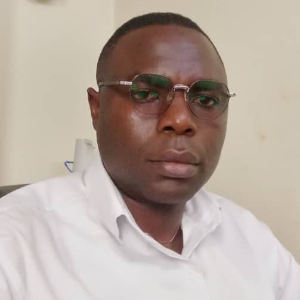
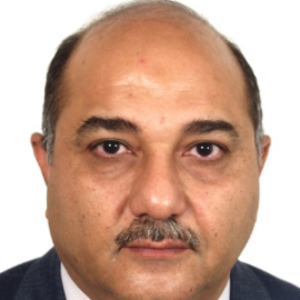



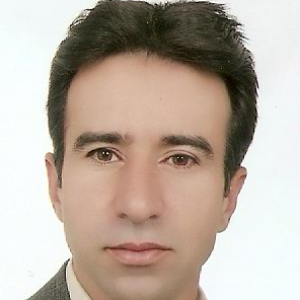


Title : Valorization of marine co-products: from lipid extraction using green processes to nutraceutical and food applications
Linder Michel, University De Lorraine, France
Total fisheries and aquaculture production reached a record 214 million tons in 2020 (FAO, 2022). The expansion of fisheries processing and aquaculture production has resulted in increasing quantities of by-products, which may represent up to 60% of total biomass, including heads [....] » Read More
Title : When sustainable aquaculture comes to the rescue of environmental preservation: Concrete actions of marine ecological restoration on the french coasts (mediterranean sea)
Sylvia Agostini, University of Corsica, France
In a current global context of marine biodiversity loss and fishery resource overexploitation, the French University of Corsica has acquired a new tool to combine research with ecological and coastal engineering: The marine platform STELLAMARE (Sustainable TEchnologies for Littor [....] » Read More
Title : A situation analysis for washington state’s emergent seaweed aquaculture industry
Monea Kerr, The Nature Conservancy, United States
When done well, seaweed aquaculture has benefits for nature and people. Restorative seaweed aquaculture can provide local economic opportunities and jobs, while also having positive impacts on the environment like improving water quality, combating impacts of ocean acidification, [....] » Read More
Title : Bioactive peptides derived after simulated gastrointestinal digestion of cooked catfish fillet for human health-promoting
Papungkorn Sangsawad, Suranaree University of Technology, Thailand
Catfish fillet (CFF) has 30% protein, making it an interesting human protein source. Reports of bioactive peptides have been generated from the enzymatic hydrolysis of many fish proteins. However, the bioactive peptides generated from CFF digestion for health promotion are stil [....] » Read More
Title : Eel (Anguilla marmorata), gene diversity, and new marine and freshwater bodies discoveries
Nguyen Quang Linh, Hue University, Vietnam
Grass – ell (Anguilla marmorata) migrates into the mainland through the estuaries during water waves and temperature changes, and lunar season, as dark times at night as natural resources for aquaculture in fresh and marine culture. The seasonal appearance of eel is related [....] » Read More
Title : Application of high-performance liquid chromatography technology to determine some biological components in natural Eel collection in Thua Thien hue, Vietnam
Kieu Thi Huyen, Hue University, Vietnam
A species of catfish belonging to the Anguilla genus called Anguilla marmorata has long been exploited and grown in Vietnam. Marbled eels are regarded as a specialty seafood species with several therapeutic and nutritive benefits. In this study, we used High-Performance Liquid Ch [....] » Read More
Title : Prevalence and molecular characterization of novel DHPV in Korean shrimp farms
Bumkeun Kim, Kyungpook National University, Korea, Republic of
Decapod hepandensovirus 1 (Decapod hepanhamaparvovirus 1, DHPV) is a viral pathogen causing growth retardation and decreased feed conversion efficiency in penaeid shrimp. The virus exhibits high genetic variation between different hosts and geographical locations. Primarily, it h [....] » Read More
Title : Thalassiosira subitis was isolated from Tam Giang Lagoon, Vietnam as a feed for the rotifer Branchionus plicatilis
Ho Thi Thu Hoai, University of Agriculture and Forestry, Vietnam
A microalgae strain of Thalassiosira subtilis was isolated from Tam Giang Lagoon in Thua Thien Hue, Vietnam, using a single-cell micropipette technique in F2 medium. Microalgae and rotifers of medium size (Branchionus plicatilis) were cultured in the plastic cans with 12-h l [....] » Read More
Title : Evaluation of bacillus strains as an alternative to antibiotics against vibrio strains and vibrio-associated acute hepatopancreatic necrosis disease (AHPND) in penaeus vannamei
Hye Jin Jeon, Kyungpook National University, Korea, Republic of
Acute hepatopancreatic necrosis disease (AHPND) is a bacterial disease caused by Vibrio spp. carrying toxin genes (pirA and pirB) located in a large plasmid (69 kb). The disease is responsible for causing 100% mortality in shrimp farms within a few days. Previously, Vibrio paraha [....] » Read More
Title : Efficacy of quorum quenching on the prevention of acute hepatopancreatic necrosis disease(AHPND) in the white leg shrimp
Nguyen Ngoc phuoc, University of Agriculture and Forestry, Hue University, Vietnam
Aquaculture is an important food-producing sector to fulfill the nutritional food demand of a continuously growing population, accounting for 46 percent of the total production and 52 percent of fish for human consumption (FAO, 2020). However, disease outbreaks especial [....] » Read More
Title : World heritage oysters – A cultural story from regional Australia
Charles Pan, Shark Bay Aquaculture Pty Ltd, Australia
Shark Bay, Western Australia is one of the World’s most biodiverse regions and it is one of the few places in the World that have met all four natural criteria for World Heritage listing. This pristine natural environment is located approximately 800km north of Perth, the c [....] » Read More
Title : Assay methodology to determine key herbivores on coral reefs
Claire Dell, State University of New York, Korea, Republic of
Coral reefs have changed radically in the last few decades with reefs in the Caribbean now averaging 13% coral cover and 40% macroalgal cover (mostly Dictyota and Lobophora). So, the herbivore species that consume these algae are vital to promoting reef health. The role herbivoro [....] » Read More
Title : The need for autogenous vaccines in Aquaculture
Rosa Merino, HIPRA, Spain
Given the growth of aquaculture, the risk of AMR during fish farm production is becoming increasingly important from the ‘One Health’ perspective. However, only a limited number of commercially licensed vaccines are available, mainly for the salmon industry, posing no [....] » Read More
Title : Stopping of NOx, NP elimination is easiest method to stop global warming
Shoichiro Ozaki, The Institute of Physical and Chemical Research, Japan
Global warming is caused by the retardation of CO2 assimilation by the elimination of NOx and NP in seven developed countries. Global warming can be protected, if enough amounts of nutrients containing nitrogen and phosphorous are supplied. Most easily available substances c [....] » Read More
Title : Captive breeding technology and developmental biology of the indigenous ornamental fishes of the western ghats of India with view to their conservation and sustainability
T V Anna Mercy, Kerala University of Fisheries and Ocean Studies, India
The Western Ghats is one among the four hotspots biodiversity of India. The WGs cover an area of about 129,037 km2 stretching to a length of 1,490 km along the western coast of India from Tapti Valley in the north (about 21°C16’ N) to Kanyakumari in the south (8°C19 [....] » Read More
Title : Earlier induction of metamorphosis in Japanese eel leptocephali stimulated by thyroid hormone
Yutaka Kawakami, Kamihata Fish Ind. Ltd,, Japan
Metamorphosis of teleosts, including Anguilliformes, is well known to be induced by thyroid hormone (TH), although the underlying mechanism is not fully understood. In this study, we investigated the experimental conditions needed to induce normal metamorphosis in artificially sp [....] » Read More
Title : Production of recombinant Bacillus subtilis expressing L-gulonolactone oxidase and its efficacy on innate immune responses in Nile tilapia
Chatsirin Nakharuthai, Suranaree University of Technology, Thailand
In recent years, various probiotic strains have been applied in the aquaculture industry as acceptable strategies for prevention and treatment of aquatic animal diseases. However, conventional probiotic applications have limitations. Therefore, in this study, the recombinant prob [....] » Read More
Title : Effect of preservation method and disinfectants on the hatching of freshwater rotifer resting eggs Brachionus calyciflorus
Bui Thi Ha Dung, Vietnam Academy of Science and Technology, Vietnam
With the development of larval-rearing technology for freshwater fishes, the demand for rotifers is increasing. The use of resting eggs is also highly recommended to prevent pathogen contamination from live feed routes, as well as to significantly reduce labor costs and algae pro [....] » Read More
Title : The possible agents causing a low survival rate of the marine rabbitfish larvae in artificial reproduction
Ngo Thi Huong Giang, Hue University, Vietnam
Rabbitfish is a tropical marine species in Vietnam, known as the specific species in Tam Giang Cau Hai lagoons. In hatcheries, the survival rate of this species is relatively low, especially from day 8 to day 15 after hatching. Several possible reasons that caused the dramatic de [....] » Read More
Title : Antibiotic resistance of Vibrio parahaemolyticus isolated from cultured groupers (Epinephelus spp) in Phu Yen, Vi
Kim Cuc Nguyen, Institute of Biotechnology, Hue University, Vietnam
Phu Yen is a coastal province in the region Central, Vietnam, where there is marine fish farming cages and ponds are quite developed. Here, grouper (Epinephelus spp) is one of the subject of rearing. However, the disease and its harmful effects are still a big obstacle to raising [....] » Read More
Title : Isolation and determination of Vibrio spp. pathogen from Sciaenops ocellatus suffering from hemorrhagic disease in in under cage culture in Vietnam
Pham Thi Hai Yen, Hue University of Agriculture and Forestry, Vietnam
This study was carried out to isolate and determine the Vibrio spp. from the Red drum fish (Sciaenops ocellatus) suffering from hemorrhagic disease in Vietnam. In this study, 18 strains of Vibrio bacteria were identified from 27 samples of Red drum fish. The isolate bacterial str [....] » Read More
Title : New qPCR method for identifying decapod hepandensovirus 1 in penaeus vannamei shrimp
Bumkeun Kim, Kyungpook National University, Korea, Republic of
Decapod hepandensovirus 1 (Decapod hepanhamaparvovirus 1, DHPV) is a viral pathogen that infects various captured or cultured penaeid shrimp species, causing digestive disruption by targeting the hepatopancreas of the host. Our recent study has detected DHPV in farmed Penaeus van [....] » Read More
Title : Evaluation of microplastics (MP) as a risk factor for White Spot Syndrome Virus (WSSV) in white leg shrimp (Penaeus vannamei)
Hye Jin Jeon, Kyungpook National University, Korea, Republic of
Plastic wastes have become a prominent environmental concern in recent years. Unfortunately, a substantial amount of plastic wastes are being discharged into the marine environments, eventually accumulating in aquatic organisms in the form of microplastics (MP). Existing studies [....] » Read More
Title : First report of detection and confirmed infectivity of white spot syndrome virus (WSSV) in crayfish imported to Korea
Jee Eun Han, Kyungpook National University, Korea, Republic of
White spot syndrome virus (WSSV) is a highly virulent viruses affects crustaceans, causing up to severe mortality within 3–10 days of symptom onset, resulting a substantial losses in the global shrimp industry. Recently, WSSV was detected in imported whiteleg shrimp (Penaeu [....] » Read More
Title : Antibacterial effect of wedelia grass extract (wedelia chinensis) toward Vibrio parahaemolyticus isolated from infected white leg shrimp (Litopenaeus vannamei) of acute hepatopancreas necrosis disease
Tran Nguyen Ngoc, University of Agriculture and Forestry, Vietnam
Will be Updated Soon...